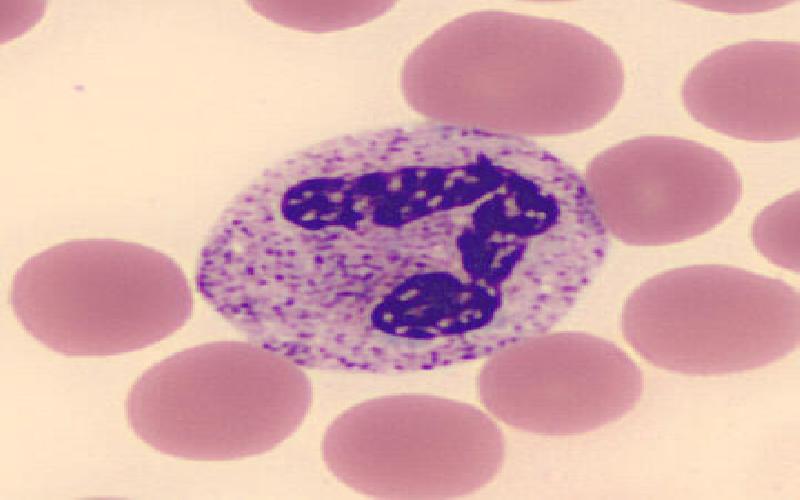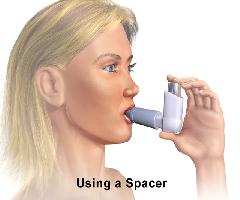A person with a low white blood cell count is vulnerable to frequent infections and hence needs to take sufficient precautions to prevent them.
Understanding 'Low White Blood Cell Count'
LEUCOCYTOPENIA or 'Low white blood cell count' refers to a fall in white blood cells below 4000 per micro litre of blood, the normal range being between 4000 to 11000 per micro litre. The white blood cells include mainly five different types of cells, NEUTROPHILS, LYMPHOCYTES, MONOCYTES, EOSINOPHILS and BASOPHILS. Each of them has its own function, and at times there can be a fall in only one of these cells without
a fall in the total number of white blood cells. However, since neutrophils make up around 40 to 45 % of all white blood cells, a low white blood count usually means a fall in the neutrophils count.The symptoms of low white blood cell count usually refer to those arising from NEUTROPENIA or low neutrophil count. Neutrophils are involved mainly in defending the body against any new infection with a bacteria or micro-organism. Whenever any external organism invades the body, they attack it and destroy it. In the process they also release substances that create inflammation of that part, consisting of redness and sometimes pain. This process of inflammation is a sign of body's defence and its absence, as happens in a case of low white blood cell count signals lack of immunity and increased vulnerability to infections.
Risk of Infection: Depends on Neutrophil Count
The vulnerability to infections is proportional to the fall in neutrophils in blood. The ABSOLUTE NEUTROPHIL COUNT (ANC) provides an indication to the risk of infection. The increase in risk is not substantial till the ANC is above 1500/ul. When the ANC falls below 1500/ul, the frequency of infections is likely to rise. When ANC falls below 1000/ul, there is moderate risk to infection. Between an ANC of 1000 to 500 per micro litre, the risk is very high. At an ANC below 100/ul, the risk of infection is extremely high, and it may be very difficult to prevent it.
Precautions to Prevent Infection
The primary objective in case of low white blood cell count is to prevent exposure to infections. Thus most of the precautions pertain to avoiding contact with infective organisms, minimizing exposure and taking measures that would somehow prevent the bacteria from settling or spreading in the body.
1. Maintain cleanliness and hygiene, to prevent bacteria from settling down. It is said that "soap, water and common sense are the best antiseptics." Frequent washing of hands is the key to prevent infections as most infections on skin and body are often carried through skin.
2. Clean water and clean air are the next most important steps. Normally, we can survive in polluted air as well as tolerate polluted water because of our immunity which prevents infections if micro-organisms are present in water and air. However, when the white blood cell count is low, the same polluted air and water can be dangerous and should be avoided.
- Avoid places that are too crowded.
- Don't enter the swimming pool unless it is a private one and you are assured
- Rooms with close ventilation and inadequate air rotation with a lot of people can be dangerous, so better avoid.
3. Avoid contact with sick people. Though it may sound a little selfish, a person with low immunity as in low white blood cell count will be avoiding a lot of problems for himself as well as his dear ones and attendants by avoiding proximity or contact with sick and infected people. It would be wise not to enter a hospital unless for one's own needs.
4. Avoid any surgery or dental procedure till the time white blood cell count rises to a safe zone. However, in some cases, it may be necessary to go under the scalpel urgently; in such cases the surgeons will have to provide strong antibiotic cover to prevent infections.
5. Take care of nutrition. Low white cell count is not the kind of situation one can afford to have while going on a diet. Improper nutrition can limit one's ability to fight infections even further.
6. In daily life, be careful not to hurt yourself. A person with ANC below 1500/ul can get infections with minor injuries like cut on face in shaving or minor abrasions. It is better to avoid actions that can cause injuries. Body contact sports may have to be avoided unless your physician permits.
7. A person with low white blood cell count may be better off making more use of antiseptics. However, one also needs to know that skin, mouth and other parts of body also host a lot of friendly bacteria, or COMMENSALS that live on body without harming it. These commensal organisms actually protect the body by preventing infecting organisms from settling down. Thus use of antiseptics should be made with due discretion, preferably limited to places injured or exposed to infection.
8. In cases of very high risk associated with very low white blood cell count, some antibiotics can be used on a prophylactic basis for limited periods. For preventing bacterial infections one DRUG is CO-TRIMOXAZOLE which does not cause resistance as frequently as other antibiotics. For preventing infection against fungi, FLUCONAZOLE or INTRACONAZOLE can be used.
9. If there is some indication of infection then one should immediately consult the physician. Thus, in following cases, physician should be consulted:
- Temperature above 100.5 degrees F
- Sore throat
- White coating in mouth OR oral ulcers
- Burning sensation while passing urine OR increased frequency of urination
- An injury taking to long to heal
Apart from these situations, if there are any other new symptoms or problems, it is preferable to consult the physician. In summary, in a case of low white blood cell count, it is better to take necessary precautions to prevent infections as well as ensure early treatment if infected.










